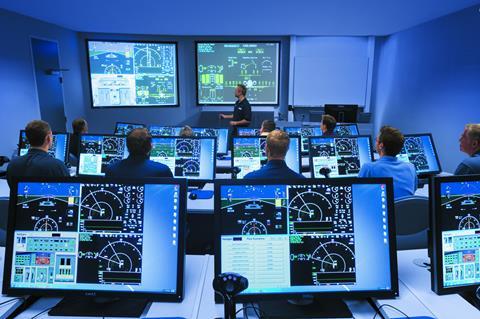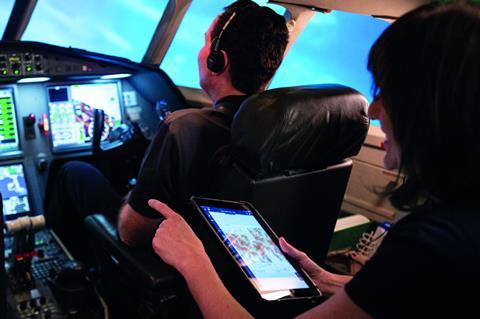FlightSafety’s pilot instructors are not only highly experienced on type, they are expert communicators and, above all, devoted to passing on their skills and committed to helping make the profession even safer
Every year, tens of thousands of pilots pass through FlightSafety International’s training centres, each emerging a more rounded professional, better equipped to make what could be life or death decisions in his or her daily job. Helping them achieve that level of proficiency and confidence are more than 1,000 full-time FlightSafety instructors, all of them experts of the type they teach.

However, their attributes do not stop there, says Richard Meikle, executive vice-president operations and safety. “Passion is what I’d start with,” he says. “Passion for the aircraft, passion for communicating, passion for passing on their skills for the betterment of our clients. Go into any of our classes and the one thing you immediately sense from the instructor is engagement and enthusiasm.”
However, that real-world experience is also vital, according to Doug May, executive vice-president, operations and FlightSafety Textron Aviation training. Most Flight-Safety trainers will have many thousands of hours in one type of aircraft under their belt. “One key characteristic that we look for is relatability,” he says. “That helps our instructors talk with authority and our clients to relate to them.”
While about a quarter of FlightSafety’s instructors are qualified to teach on more than one aircraft model, it is rare that they straddle brands. “The main reason for that is the level of detail about each aircraft we expect our instructors to have,” says Meikle. “We need them to know the aircraft inside out as they have to be prepared to handle questions from pilots who are themselves extremely knowledgeable on that type.”
So what makes an experienced pilot switch from the skies to the simulator and the classroom? There might be many reasons, says Meikle. “They may have enjoyed a long career in the military or civil aviation and don’t want to drag a bag around anymore, it could be for medical reasons or perhaps they are seeking a different work-life balance.”
Many just love to teach.Many FlightSafety instructors still fly for pleasure or occasionally commercially; others have their feet firmly on the ground. What they have in common is that they “want to give back”, asserts May. “They want to make sure the next generation of pilots is as good, or better, than they were.”
However, it is not enough for a FlightSafety instructor simply to have an impressive record in aviation. All have to go through a rigorous training process lasting three to four months before they are qualified to deliver content and train clients. More training is involved if the instructor wants to become an examiner – typically, this opportunity will arise after they have carried out a year of teaching.
All instructors undergo annual training and assessments to ensure they are up to speed with industry and cockpit updates as well as the latest regulatory requirements from the authorities, and are encouraged to improve their skills through learning best practices. Making the grade is not a formality. “Not everyone makes it through the programme,” notes May.

Training draw
Meikle says the appeal of being home every night is what leads many to knock on FlightSafety’s door. “That’s attractive for a lot of people. Instructors have schedules 60 days in advance and do not have to be on call or, as some flight operations expect, available even on their days off,” he says. However, it is not the only lure. “To become a master of their craft is definitely a key attraction,” stresses Meikle.
“Go into any of our classes and the one thing you immediately sense from the instructor is engagement and enthusiasm”
Richard Meikle, executive vice-president operations and safety, FlightSafety
FlightSafety also employs cabin crew and maintenance technician trainers. While flight crew training – by its very nature – needs an on-site simulator or cabin mock-up, FlightSafety maintenance instructors can provide courses at clients’ premises. The pandemic also saw remote classroom learning come into vogue, and instructors still provide some virtual modules.
FlightSafety’s entire philosophy is to make pilots safer and not ensure they simply tick regulatory boxes, and the company’s approach to whom it employs to instruct fits this ethos perfectly. “The regulatory side is a byproduct,” insists Meikle. “If our instructors are not enhancing safety every time they teach, they are not doing their job.”























